Onion Shoyu Ramen is made with chicken broth and a soy sauce soup base. This ramen is not only delicious but also healthy. It is an ideal snack for those who love ramen and want to avoid calorie-laden foods. Its unique flavour is a result of soy and onions. Nevertheless, it is a bit expensive, and it is not recommended for everyday use.
Onion Shoyu Ramen Recipes
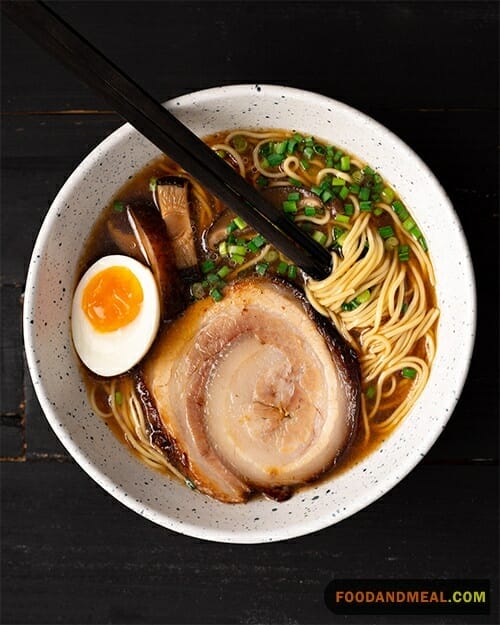
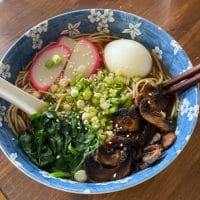
Onion ( Negi ) Shoyu Ramen
Equipment
Ingredients
- 4 tablespoons garlic oil
- ¾ cup Shoyu Tare
- 5 cups any type clear soup
- 1⅓ pounds noodles fresh , ⅓ pound per bowl, such as Chukasuimen
- 8 to 16 slices Chicken Chashu
- 4 Ajitama halved
- 4 cups white onion diced
Instructions
- With all your ingredients ready to go, bring a large pot of water to a boil over medium-high heat.
- Heat your ramen bowls by filling them halfway with hot water. The bowls don’t need to be scalding, but they should be hot to the touch. Dump out the hot water and dry the bowls with some paper towels or a clean towel.
- Put 1 tablespoon of garlic oil in each ramen bowl.
- Put the tare and soup in a medium saucepan. Mix and bring to a simmer over low heat.
- Cook the noodles in the large pot of boiling water. Ramen that has been cut to a standard thickness (about 1 mm) will cook in 1 to 2 minutes.
- About 30 seconds before the noodles are finished cooking, ladle the soup into the ramen bowls.
- Drain the noodles, taking care to shake off as much excess water as you can. Carefully place some noodles in each bowl of soup, keeping them tidy.
- Place 2 to 4 slices of chashu, 1 egg, and 1 cup of diced onion neatly on the ramen. Serve immediately.
Video
Notes
- In shops, this style of ramen is made with dried noodles as opposed to fresh. Any ramen noodle will work.
- Soup: Mix equal parts unseasoned low-sodium chicken broth and dashi broth. The lighter the soup, the better. Japanese dashi powder to make broth can be found in the Asian foods section of many supermarkets or in Asian grocery stores or online.
- Noodles: Use 3 ounces of dried ramen noodles per bowl, preferably the thin, straight style.
Nutrition
© Food And Meal
This website provides approximate nutrition information for convenience and as a courtesy only. Nutrition data is gathered primarily from the Spoonacular Database, whenever available, or otherwise other online calculators.
Alternative Method: Slow Cooker Onion Shoyu Ramen
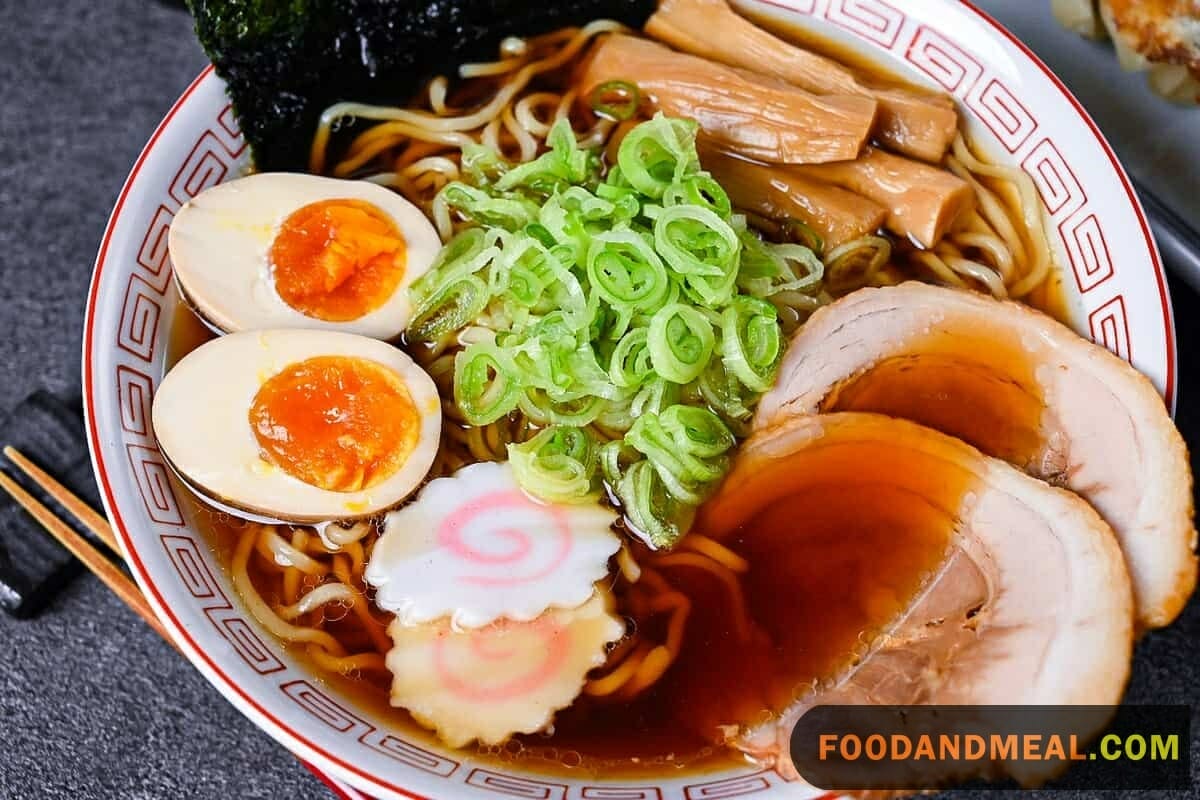
Ingredients:
- 1 pound of pork belly, thinly sliced
- 4 cups chicken broth
- 2 cups water
- 2 onions, thinly sliced
- 4 cloves garlic, minced
- 2 tablespoons soy sauce
- 1 tablespoon mirin
- 1 tablespoon sake (optional)
- 1 tablespoon sugar
- 1 teaspoon sesame oil
- 1 teaspoon grated ginger
- 2 packs of ramen noodles
- Green onions, bean sprouts, and boiled eggs for garnish
Instructions:
- Begin by searing the pork belly slices in a hot pan until they develop a nice golden-brown color. This step adds depth of flavor to your ramen.
- In your slow cooker, combine the seared pork belly, sliced onions, minced garlic, soy sauce, mirin, sake (if using), sugar, sesame oil, and grated ginger.
- Pour in the chicken broth and water, ensuring that the ingredients are well submerged.
- Set your slow cooker to low heat and let the mixture simmer for 6-8 hours. The slow cooking process will infuse the broth with rich flavors and make the pork incredibly tender.
- About 30 minutes before serving, cook the ramen noodles separately according to the package instructions. Drain and set aside.
- Assemble your bowl of Onion Shoyu Ramen by placing a serving of cooked ramen noodles in each bowl.
- Ladle the flavorful broth, along with the tender pork belly slices and onions, over the noodles.
- Garnish your ramen with sliced green onions, bean sprouts, and halved boiled eggs.
- Serve hot and enjoy the comforting and aromatic flavors of your slow-cooked Onion Shoyu Ramen.
Tips for making Onion Shoyu Ramen
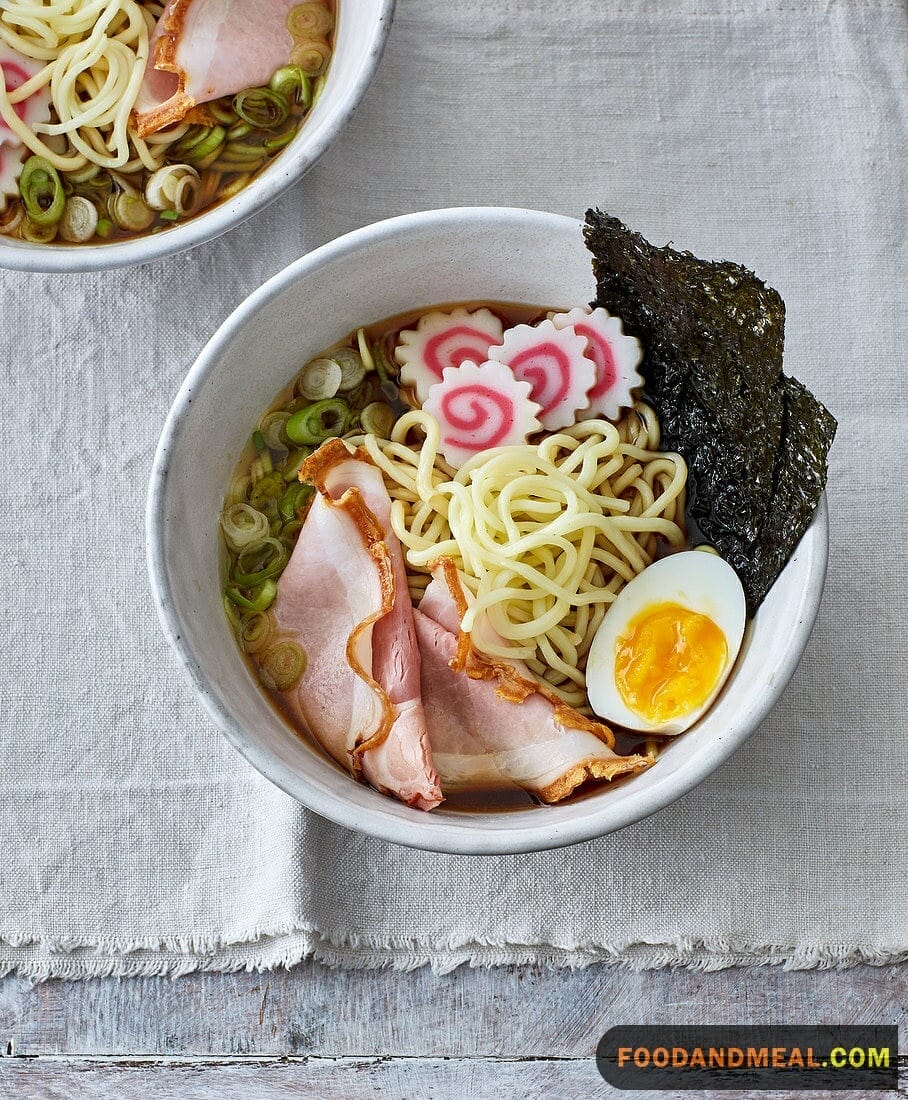
Cooking Tips
- Sear Your Pork: When making chashu or pork belly slices, sear them in a hot pan first. This step caramelizes the meat, adding a depth of flavor to your ramen.
- Simmer Slowly: For the tastiest broth, simmer it slowly. Allow the flavors to meld together over low heat for a truly rich and aromatic result.
- Customize Toppings: Don’t be afraid to get creative with your toppings. Soft-boiled eggs, bean sprouts, and nori sheets are classic, but feel free to add your favorites.
- Perfectly Cooked Noodles: Cook the ramen noodles separately and al dente. Rinse them under cold water to stop the cooking process and prevent them from becoming mushy.
- Balance Flavors: Adjust the soy sauce, mirin, and sugar ratios to achieve your preferred level of sweetness and saltiness in the broth.
- Overcooking Noodles: Overcooked noodles can ruin your ramen experience. Keep a close eye on them and follow the package instructions for the best results.
- Skipping the Sear: Searing the pork belly adds complexity to your dish. Don’t skip this crucial step.
- Using Too Much Soy Sauce: Be cautious with soy sauce. Adding too much can overpower the broth and make it overly salty.
- Rushing the Broth: Allow the broth to simmer at a gentle pace. Rushing this step can result in a less flavorful broth.
Serving Suggestions
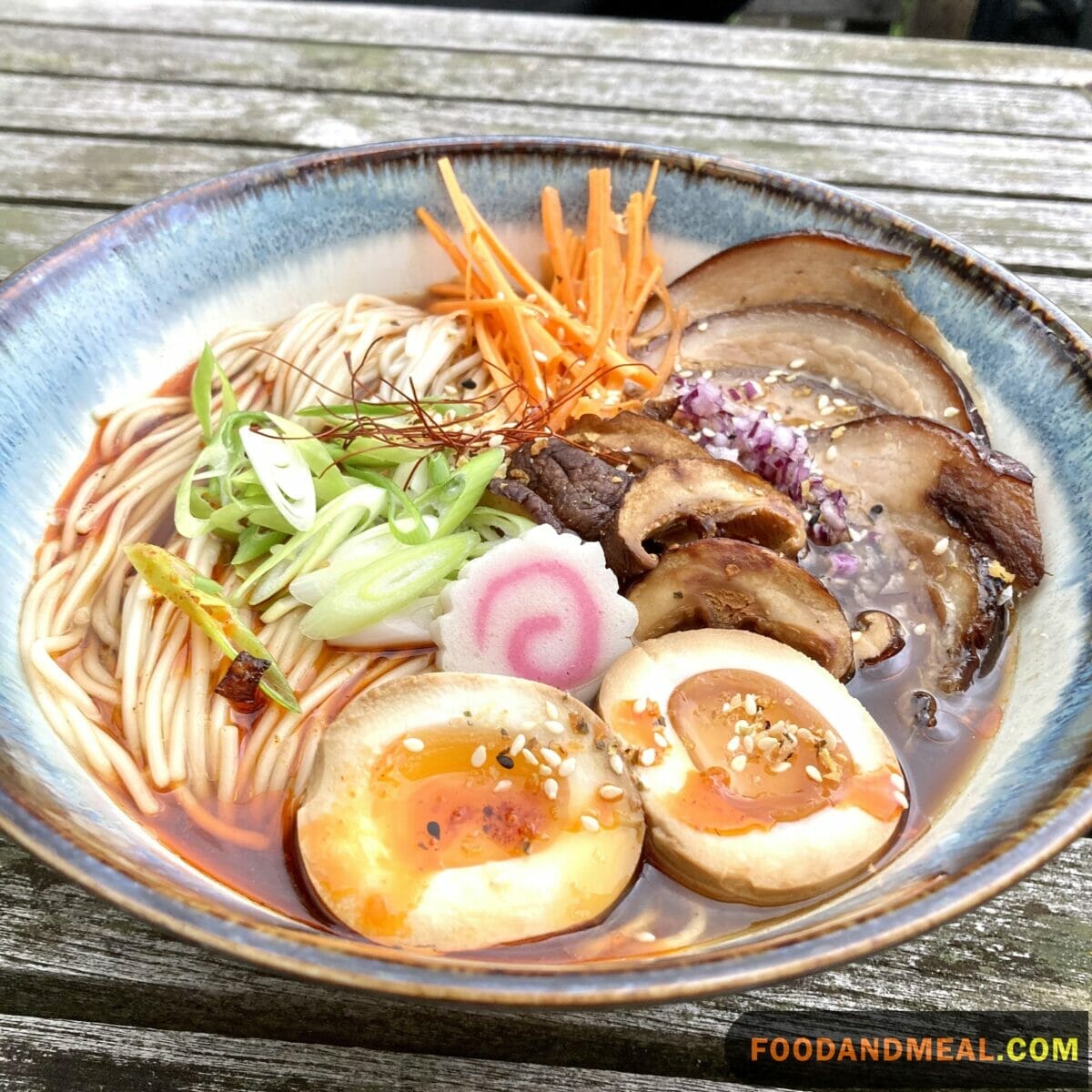
Complementary Sides:
- Gyoza: A plate of pan-fried or steamed gyoza (dumplings) makes an excellent side dish.
- Edamame: Steamed edamame sprinkled with sea salt is a great appetizer.
- Miso Soup: A small bowl of miso soup pairs beautifully with ramen and adds extra warmth to your meal.
Garnish Galore:
- Green Onions: Finely chopped green onions add a fresh and aromatic touch to your ramen.
- Nori Sheets: Toasted nori sheets or seaweed strips offer a subtle umami flavor.
- Sesame Seeds: A sprinkle of toasted sesame seeds can enhance the nuttiness of the broth.
Beverage Pairings:
- Matcha Tea: The earthy flavors of matcha tea complement the umami-rich ramen broth.
- Japanese Beer: Enjoy a crisp Japanese lager for a refreshing contrast to the savory ramen.
- Ramune: This Japanese soda with unique flavors like lychee or melon adds a fun twist to your meal.
Frequently Asked Questions about Onion Shoyu Ramen
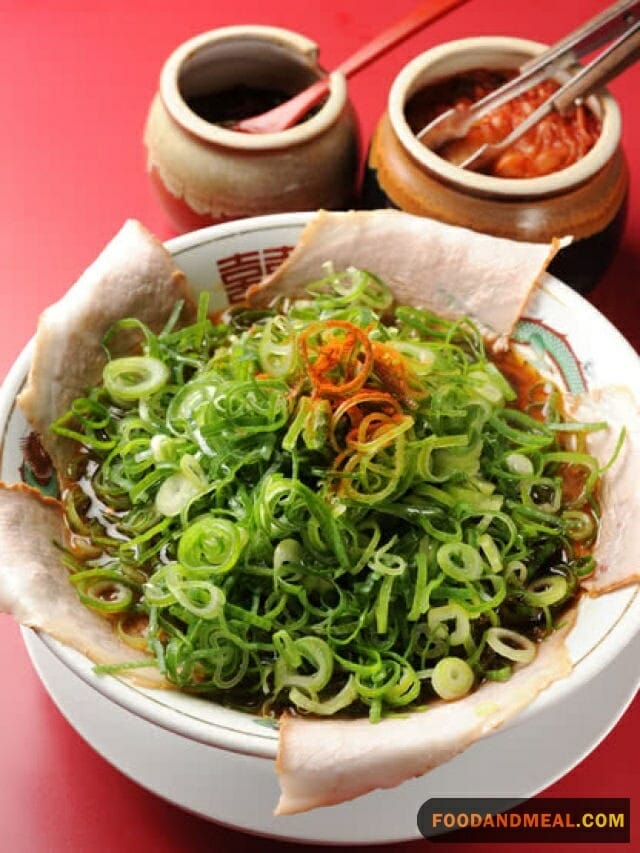
- Can I store leftover Onion Shoyu Ramen? Yes, you can store leftover ramen in an airtight container in the refrigerator for up to 2 days. However, be aware that the noodles may become softer over time.
- Can I make a vegetarian version of this ramen?Absolutely! Swap out the pork-based ingredients for tofu or vegetable-based options to create a delicious vegetarian Onion Shoyu Ramen.
- Can I freeze the broth for later use? Yes, you can freeze the broth for up to 3 months. Ensure it’s in an airtight container and leave some space for expansion when freezing.
- What if I can’t find mirin or sake? You can substitute mirin with a 1:1 ratio of dry white wine and a pinch of sugar. For sake, try using dry sherry or chicken or vegetable broth.
- How can I reheat leftover ramen without overcooking it? To reheat, gently warm the broth and pork separately, and then pour them over freshly boiled ramen noodles. This ensures that everything retains its intended texture.
Indulge in the flavors of our Onion Shoyu Ramen recipe. Discover expert tips and FAQs for a perfect ramen experience. Savor the comfort today.
I'm James F Anderson, a noted sous chef from London and a Le Cordon Bleu alumnus. My career began in a Michelin-starred Parisian eatery, where my blend of classic and contemporary cooking, using seasonal ingredients, earned accolades. Recognized in culinary publications and on cooking shows, I’m committed to mentoring aspiring chefs and delivering memorable dining experiences, marking me as a standout talent in the culinary world.



